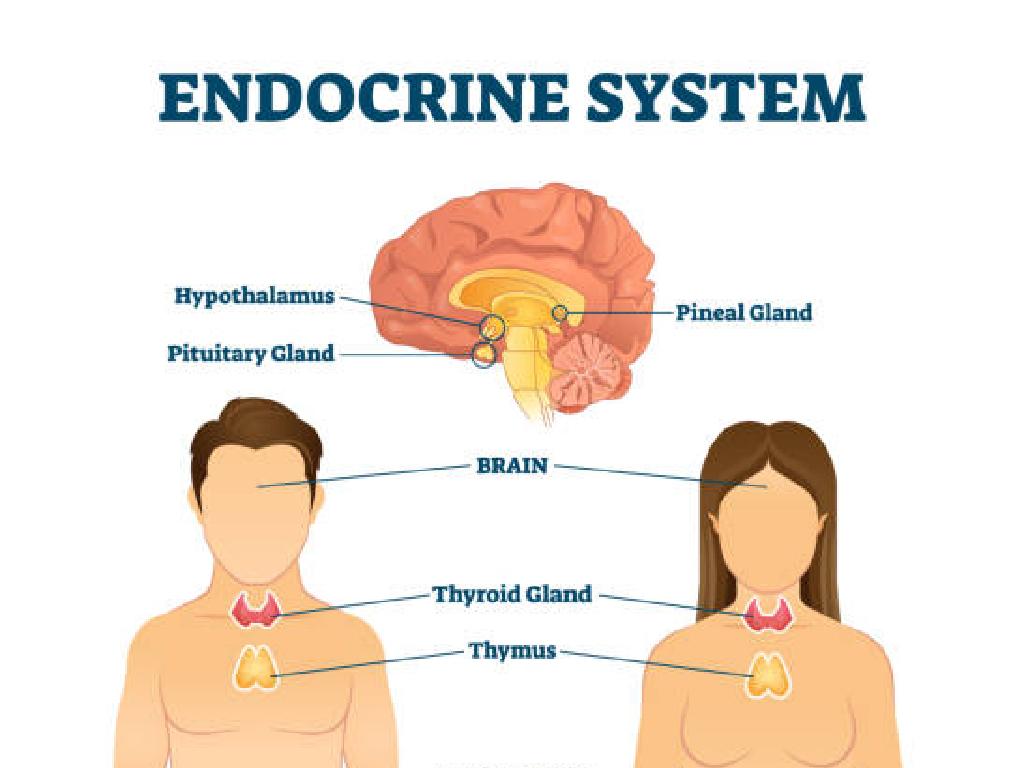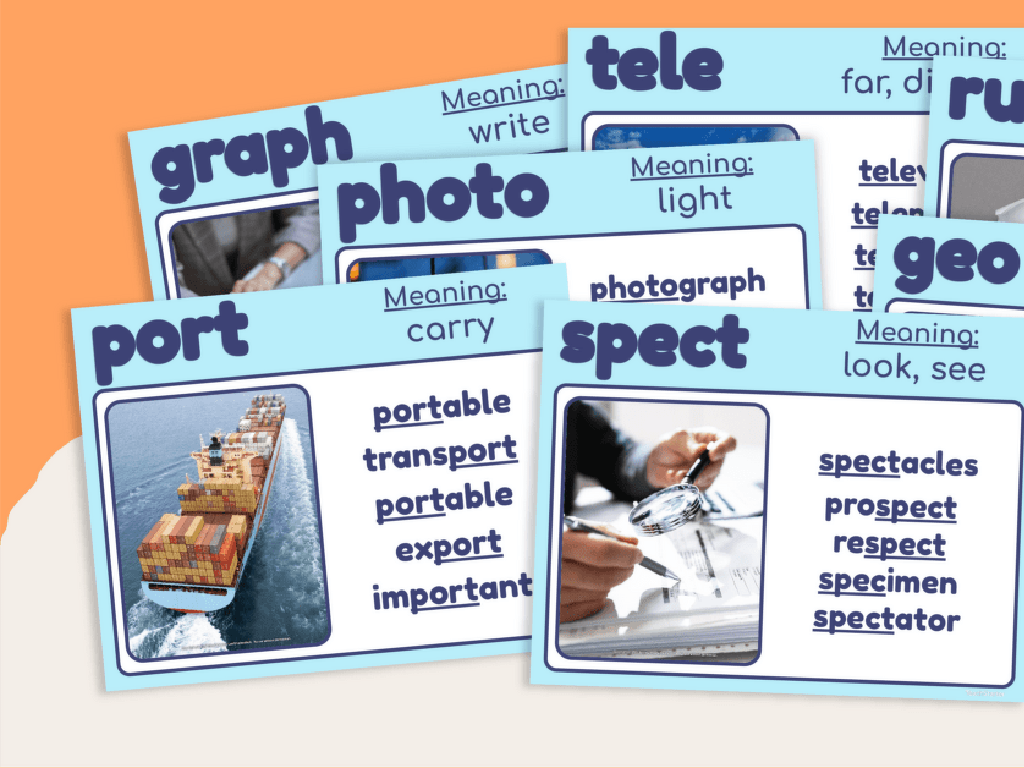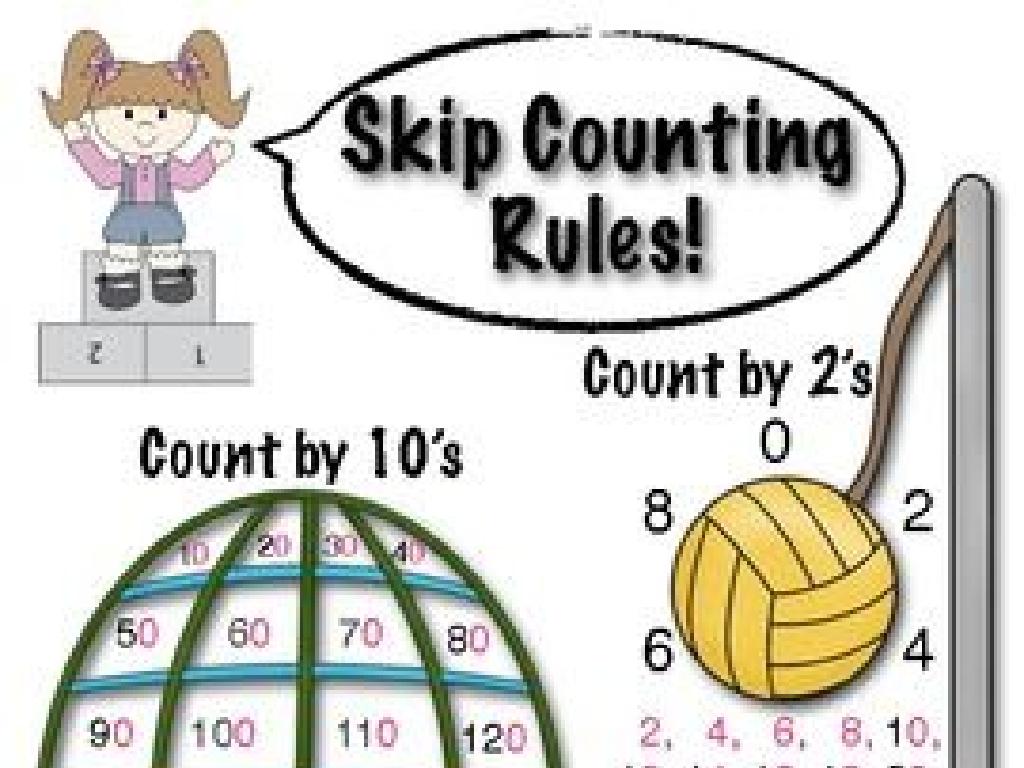Make A Number Using Addition - Sums Up To 20
Subject: Math
Grade: First grade
Topic: Addition Up To 20
Please LOG IN to download the presentation. Access is available to registered users only.
View More Content
Welcome to Addition!
– Becoming addition experts today
– Making numbers with smaller ones
– For example, 8+7 makes 15
– Addition for quicker counting
– Like counting apples in two baskets quickly
– Practice sums up to 20
– We’ll add numbers like 5+10, 6+9, and more
|
This slide introduces first graders to the concept of addition as a tool for combining smaller numbers to make larger ones, with a focus on sums that do not exceed 20. Emphasize the practicality of addition in everyday life, such as combining items or counting quickly. Use visual aids like counters or pictures to help students visualize the addition process. Encourage participation by asking students to come up with their own combinations of numbers that add up to 20 or less. Prepare to guide them through several examples and set the stage for hands-on activities where they can practice this new skill.
Understanding Addition: Sums Up to 20
– Addition combines numbers
– Example: 2 apples + 3 apples
– 2 apples plus 3 apples equals 5 apples
– The ‘+’ sign means add
– The ‘=’ sign means ‘is the same as’
|
This slide introduces the concept of addition to first-grade students. Start by explaining that addition is a way of combining two or more numbers to make a new number, which we call the sum. Use tangible examples, like combining apples, to make the concept relatable. Clarify the meaning of the ‘+’ and ‘=’ signs, as these are fundamental symbols in math that the students will frequently encounter. Encourage the students to think of addition as a way of ‘putting together’ items or quantities. After explaining, engage the students with simple addition problems that result in sums up to 20 to reinforce their understanding.
Making Numbers Add Up to 10
– Start with smaller numbers
– Example: 5 + 5 equals 10
– Adding two of the same number, like 5 and 5, makes 10
– Find other pairs that make 10
– Use fingers to count and find pairs that add to 10
– Practice with different numbers
– Try 4 + 6, 3 + 7, or 2 + 8 to see other ways to make 10
|
This slide introduces the concept of addition with the goal of making the number 10. It’s a foundational skill in math for first graders. Start by showing them that adding two equal numbers, like 5 and 5, makes 10. Then, encourage the students to use their fingers or counters to find other number pairs that add up to 10. This activity helps them understand that there are multiple combinations to reach the same sum. Provide examples and let them practice with different numbers to reinforce the concept. The activity should be interactive, allowing students to explore and share their findings.
Making Numbers Up to 20 with Addition
– Adding two numbers to make 20
– Example: 10 + 10 equals 20
– It’s like putting two groups of 10 blocks together
– Exploring 8 + 7
– Does 8 + 7 make 20? Let’s count and see!
– Practice with different numbers
– Try adding other pairs of numbers to reach 20
|
This slide is aimed at helping first graders understand how to make the number 20 by adding two smaller numbers together. Start by showing them the concept with an easy example, such as 10 + 10. Then, challenge them with a slightly trickier sum, like 8 + 7, and solve it together as a class. Encourage the students to use physical objects like blocks or counters to visualize the addition. Finally, give them the opportunity to practice with different pairs of numbers, reinforcing the concept that there are multiple combinations that can add up to 20. The goal is to build their confidence in creating the number 20 through various addition pairs.
Using Objects to Learn Addition
– Use objects like blocks to add
– Example: 4 red blocks + 5 blue blocks
– If we have 4 red and 5 blue, how many in total?
– Count blocks together for total
– Practice counting all the blocks one by one
– Adding up to 20 with objects
– We can use different objects to make sums up to 20
|
This slide is designed to introduce first graders to the concept of addition by using tangible objects such as blocks or counters. Start by explaining that objects can represent numbers and can be used to visually demonstrate addition. Use the example provided to show how to combine two groups of blocks and count them all together to find the total. Encourage the students to participate by counting aloud with you. This hands-on activity helps to solidify the concept of addition and makes learning math fun. For the activity, provide a variety of objects for the students to use and create sums up to 20, ensuring they understand that the total sum should not exceed 20. This will prepare them for more abstract addition problems in the future.
Addition Practice: Let’s Add Together!
– Practice with addition problems
– Solve an addition problem together
– Example: 7 + 8. Let’s add 7 and 8 together.
– Use fingers or objects to help add
– Counting physical items like blocks can make adding easier.
– Remember, the sum should not exceed 20
|
This slide is aimed at helping first graders practice addition with sums up to 20. Start by presenting a simple addition problem on the board and invite the students to solve it with you. Encourage them to use their fingers or classroom objects like blocks or counters to visualize the addition process. This tactile approach helps solidify the concept of addition. Make sure to remind them that the total, or sum, of the numbers they are adding should not be more than 20. As an activity, you can have different students come up to the board to try their own addition problems, or pair students up to solve problems together. Provide guidance and positive reinforcement as they work through the problems.
Class Activity: Addition Bingo
– Let’s play Addition Bingo!
– Receive your bingo card
– Each card has sums up to 20
– Listen for addition problems
– I’ll call out problems like 8+7
– Find and mark the correct sum
– If you have ’15’, place a marker on it
|
This interactive game is designed to help first graders practice addition in a fun and engaging way. Each student will receive a bingo card with various sums up to 20. As the teacher calls out different addition problems, students will need to solve them and then mark the corresponding sum on their bingo cards. The first student to get five in a row (horizontally, vertically, or diagonally) and shout ‘Bingo!’ wins. Prepare several rounds to give multiple students a chance to win. Possible variations of the game could include using different colored markers, playing in pairs, or creating themed bingo cards. Ensure to encourage students and praise their efforts to create a positive learning environment.
Great Work on Addition!
– Proud of your addition skills
– Keep practicing at home
– Practice with sums up to 20
– Try adding 5 + 5, then 6 + 4, and more
– Exciting subtraction next!
|
Congratulations to the students for their hard work in learning to make numbers using addition with sums up to 20. Encourage them to continue practicing at home to reinforce their skills. Provide examples of simple addition problems they can work on. Let them know that their next adventure in math will involve learning about subtraction, which is just as fun and important as addition. Prepare a set of practice problems for them to take home, and consider sending a note to parents about supporting their child’s learning journey.






